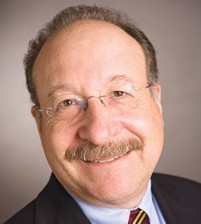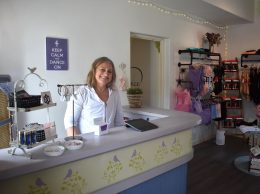Dubroff: When it comes to the PPP, we’re not in it together
This does not feel like a team effort.
I’m stepping out of my role as pundit this week and putting on my hat as a small business owner. And I am here to state that the rollout of the Paycheck Protection Program has been a nightmare for many small business owners.
Every day I get a different set of very noisy messages that provide a blueprint for how not to run a $345 billion program.
In case you have not heard of it, PPP is designed to efficiently put money in the hands of smaller companies and preserve their employees’ jobs.

From the Editor
To underscore how dysfunctional things are, here is a summary of my inbox haul for the days prior to press time:
• The nation’s largest and most powerful bankers sent messages suggesting they would be happy to make loans to small businesses like mine but regulators won’t let them expand their balance sheets.
• Immediately following came a note from a regulator. At least for one bank, Wells Fargo, the cap on loan expansion has been lifted. Will that help? At least the people writing these press releases are getting paid.
• Next, BREAKING NEWS alerts that an SBA official was blasting big banks for not rolling out the program fast enough in a closed-door meeting. That made me laugh — why the secrecy?
• A few minutes later came an urgent note from my payroll processor telling me to trash all the reports I downloaded this week — after finally figuring out how to access our company’s online payroll account. New rules from Treasury mean that all the payroll calculations are wrong.
• A formerly overlooked email from my payroll firm told me how to log on to my payroll account and retrieve the Form 941 package that now needs to be replaced with the new form.
I know there are great examples of organizations, including our remaining community banks, which have done a great job of opening the window and shepherding through as many applications as possible. But they, more than the big banks, face hard limits on the amount of loans they can underwrite without putting their capital ratios at risk.
I’m also guessing that by the time this column gets published, some of the nastier wrinkles in PPP will have gotten worked out.
But hey, running a small business is supposed to be simple enough that someone without a college degree can be successful at it. And putting $345 billion in the hands of entrepreneurs should not involve clogging up my inbox day after day with messages that are worthless by the time they arrive.
I also think that PPP should not involve a situation where every small business and nonprofit is competing against every other small business and nonprofit for a limited pool of funds. Not if the mantra for surviving the novel coronavirus pandemic is “we are all in this together.”
I spoke with Todd Lowenstein, portfolio manager at HighMark Capital and a lecturer at UC Santa Barbara. He thinks that we are looking at “a couple of years” for the economy to rebound with some damage that is permanent.
An easier path would have been to simply inject the money into the payroll accounts of individual businesses, something Lowenstein said was done in European countries, where pay was guaranteed at roughly a 70 percent level for employees — whether their employer was open or not.
I personally would trade an electronic funds transfer into our payroll account for the delayed gratification that may or may not come with downloading another Form 941, crossing my fingers, checking my email and waiting to see how PPP is going to work out.
• Henry Dubroff is owner and editor of the Business Times. Contact him at [email protected].











